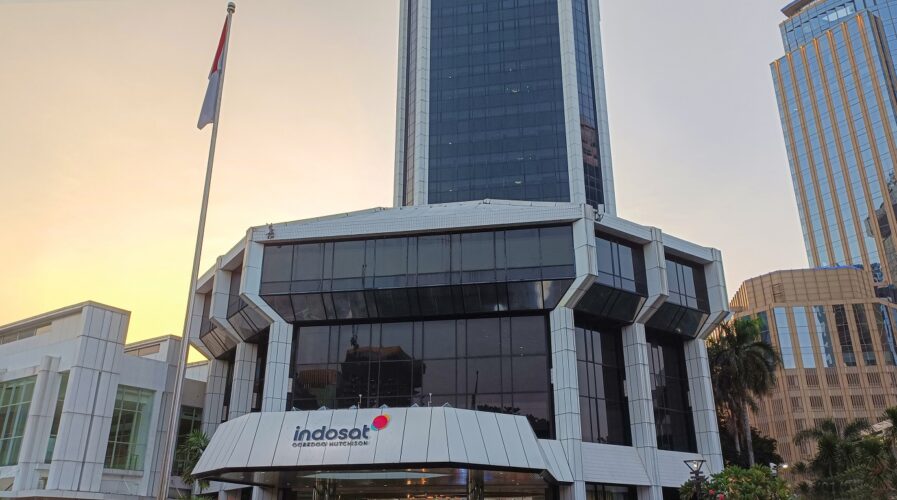
(Source – Indosat)
Indosat Ooredoo to build 18000km submarine cable system
Indosat Ooredoo Hutchison is the second-largest cellular telecommunications company in Indonesia. The country is already home to one of the biggest e-Commerce markets in world and has the most internet users in the region. As such, internet speed is key in the country as millions rely on connectivity for their daily activities.
Over the years, several large tech companies have also built their data centers in the country, signaling the importance and value Indonesia offers to these tech giants. With that said, the fiber connectivity has to be at its best to ensure the process of data that is generated, collected, and processed flow with minimal disruption.
Last year, Facebook and Google announced plans for two new undersea internet cables to connect Southeast Asia to North America. The project with regional telecoms companies aims to supply faster internet to Singapore and Indonesia. The cables will be the first to directly connect North America to the main parts of Indonesia, Facebook added. The first cable, Echo, is due to be completed by 2023, in partnership with Google and Indonesian telecoms company XL Axiata. The second cable, Bifrost is planned to be completed a year later.
Now, Indosat Ooredoo Hutchison and Inligo Networks have signed a non-binding Memorandum of Understanding to build a high-capacity fiber-optic telecommunication submarine cable system, Inligo Networks Asia Connect Cable System or ACC-1. Both companies have agreed to discuss further for final partnership agreement to build ACC-1.
The partnership will support Indosat Ooredoo Hutchison’s vision to become the most preferred digital telco of Indonesia by developing a new low-latency and high-capacity data network through fiber optic cables, connecting multiple Indonesian cities to Australia, Guam, Singapore, and the United States through Indonesian waters on the 18,000 km system.
Indonesia is actively accelerating its digital transformation efforts, especially to the many islands in the country. This includes ensuring 4G services will be available in all regions across Indonesia, including in the 3T areas while expanding 5G networks as the foundation for future solutions.
The construction of the ACC-1, which will provide up to a 128 Tbps network throughout the system, will allow Indosat Ooredoo Hutchison to provide a broader network, especially for eastern Indonesia, and increase network capacity for Business-to-Consumer (B2C) and Business-to-Business (B2B) services throughout Indonesia.
According to Desmond Cheung, CTO of Indosat Ooredoo Hutchinson, the partnership allows them to be an exclusive partner for the Inligo Submarine network, providing high-capacity connectivity within Indonesia and the rest of the Pacific region, including the potential to reduce costs in developing advanced connectivity reaching the eastern part of Indonesia and expand our product portfolio in wholesale telecommunication services.
“This partnership is also in line with our long-term commitment in accelerating Indonesia’s digital transformation agenda as we believe it must be underpinned by a sophisticated submarine cable system like the ACC-1,” added Cheung.
For Brian Evans, Chief Executive Officer of Inligo Networks, Indonesia has a great opportunity to become a digital powerhouse of Southeast Asia. As a submarine cable network plays a vital part in connecting the Indonesian archipelagos, he hopes the partnership will increase data traffic, facilitate data transfer, internet access, and cloud storage which now become an integral part of an increasingly digital society and digital nations.
The Inligo Networks ACC-1 mega project will begin construction in 2022, with the first route connecting Singapore, Batam, and Jakarta. In mid-2023, subsea telecommunications cables will be constructed from Medan, Makassar, Kupang, Dili (Timor Leste) to Darwin (Australia), followed by the construction from Manado to Guam by the end of 2023. The project is expected to be completed in 2024, connecting Guam to Los Angeles (United States), and fully connecting Southeast Asia, Australia, the Pacific, and the United States.
READ MORE
- Strategies for Democratizing GenAI
- The criticality of endpoint management in cybersecurity and operations
- Ethical AI: The renewed importance of safeguarding data and customer privacy in Generative AI applications
- How Japan balances AI-driven opportunities with cybersecurity needs
- Deploying SASE: Benchmarking your approach


